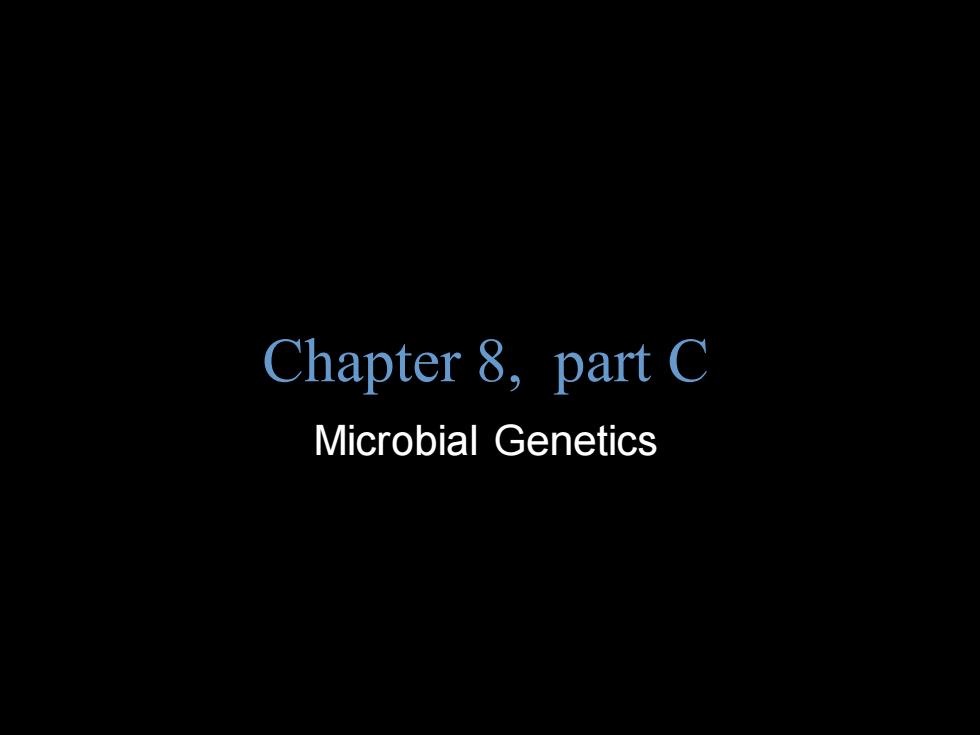
Chapter 8,part C Microbial Genetics
Copyright © 2004 Pearson Education, Inc., publishing as Benjamin Cummings B.E Pruitt & Jane J. Stein Chapter 8, part C Microbial Genetics
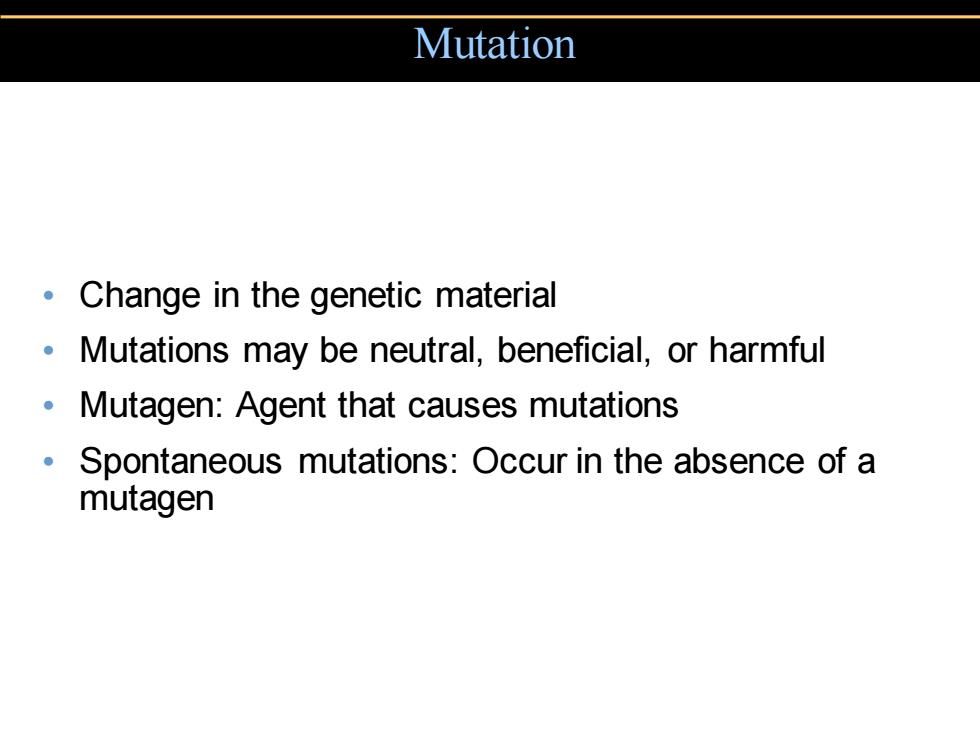
Mutation Change in the genetic material Mutations may be neutral,beneficial,or harmful Mutagen:Agent that causes mutations Spontaneous mutations:Occur in the absence of a mutagen
• Change in the genetic material • Mutations may be neutral, beneficial, or harmful • Mutagen: Agent that causes mutations • Spontaneous mutations: Occur in the absence of a mutagen Mutation

Mutation Base substitution .Change in one base (point mutation) 。Missense mutation .Result in change in amino acid DNA(coding strand) OACOOCA WNCC AUU DNA(coding strand) OACOUCAAAUC AUD Transcription A.N.acoNdec mRNA oAA8oo的eoAA mRNA Amino acid sequence Me Phe Stop Translation (b)Missense mutation Amino acid sequence Met Lys Phe Gly Stop (a)Normal DNA molecule Figure 8.17a,b
• Base substitution (point mutation) • Missense mutation Mutation Figure 8.17a, b •Change in one base •Result in change in amino acid

Mutation 。Nonsense mutation Results in a nonsense codon DNA(coding strand) TACUUCAAACC AUU TA CAU CA AACC GAU D Transcription 风a.ohcooc.&eoA囚 Aod风风o0 aedech mRNA Met Stop Translation (c)Nonsense mutation Amino acid sequence Phe Gly Stop (a)Normal DNA molecule Figure 8.17a,c
• Nonsense mutation Mutation • Results in a nonsense codon Figure 8.17a, c
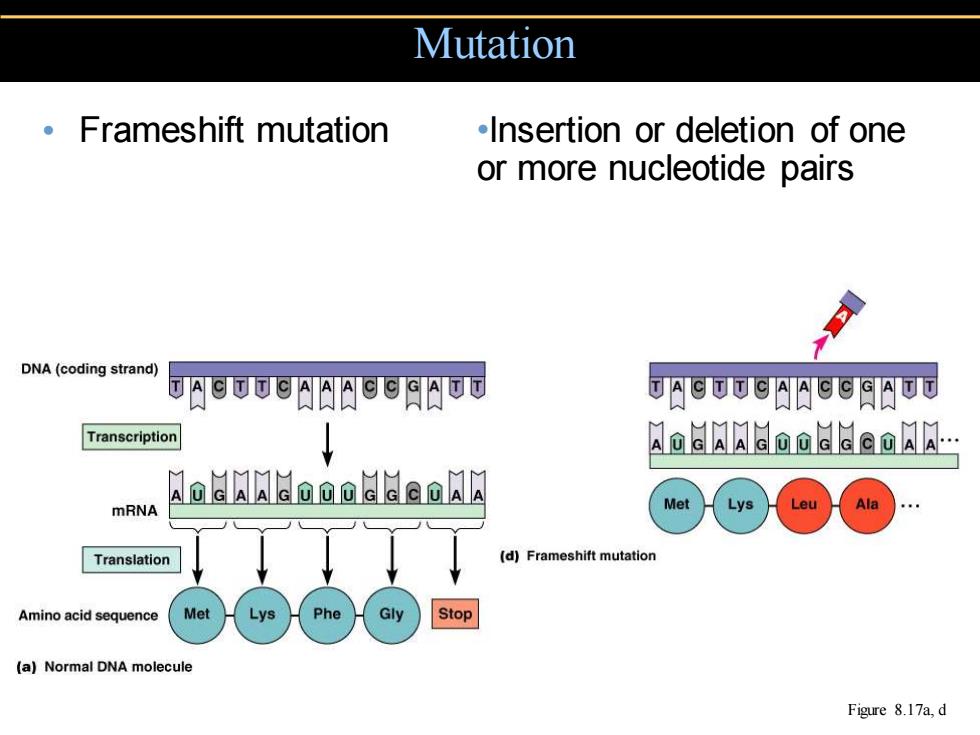
Mutation 。Frameshift mutation .Insertion or deletion of one or more nucleotide pairs DNA(coding strand) TACOOCAAACC AUO TACUUCAACCGAUT Transcription ↓ AasAsansse AodA囚oo@&的aAA mRNA Translation (d)Frameshift mutation Amino acid sequence Met Lys Phe Gly Stop (a)Normal DNA molecule Figure 8.17a,d
• Frameshift mutation Mutation Figure 8.17a, d •Insertion or deletion of one or more nucleotide pairs

Mutation lonizing radiation (X rays and gamma rays)causes the formation of ions that can react with nucleotides and the deoxyribose-phosphate backbone. Nucleotide excision repairs mutations
• Ionizing radiation (X rays and gamma rays) causes the formation of ions that can react with nucleotides and the deoxyribose-phosphate backbone. • Nucleotide excision repairs mutations Mutation
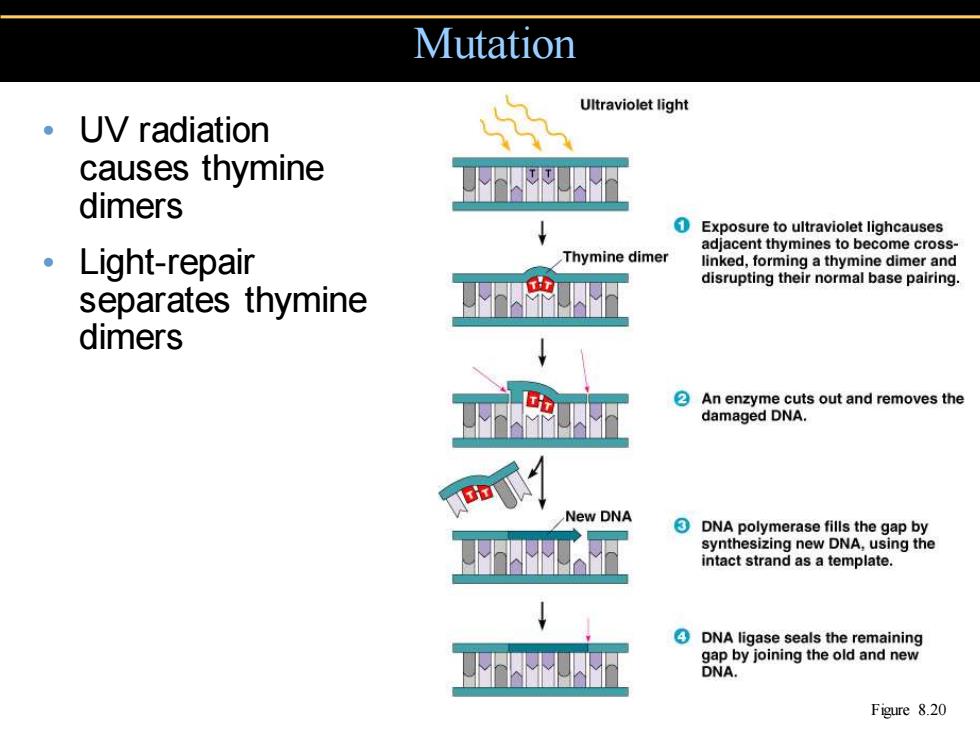
Mutation Ultraviolet light 。 UV radiation causes thymine dimers Exposure to ultraviolet lighcauses adjacent thymines to become cross 。Light-repair Thymine dimer linked,forming a thymine dimer and disrupting their normal base pairing. separates thymine dimers An enzyme cuts out and removes the damaged DNA. New DNA DNA polymerase fills the gap by synthesizing new DNA,using the intact strand as a template. DNA ligase seals the remaining gap by joining the old and new DNA. Figure 8.20
• UV radiation causes thymine dimers • Light-repair separates thymine dimers Mutation Figure 8.20
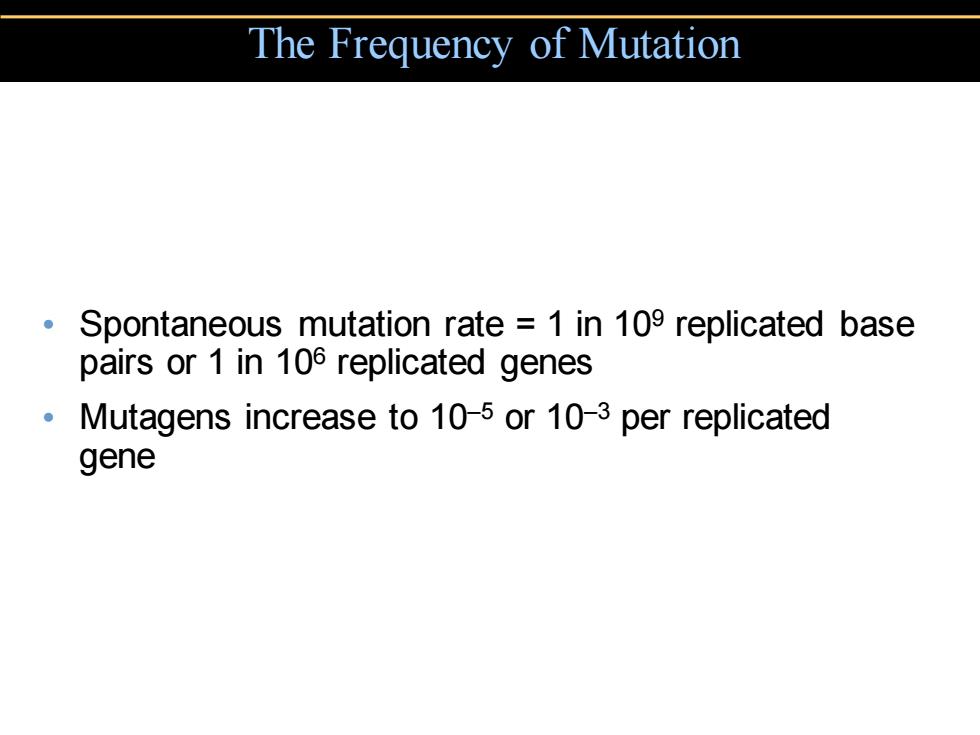
The Frequency of Mutation Spontaneous mutation rate 1 in 109 replicated base pairs or 1 in 106 replicated genes Mutagens increase to 10-5 or 10-3 per replicated gene
• Spontaneous mutation rate = 1 in 109 replicated base pairs or 1 in 106 replicated genes • Mutagens increase to 10–5 or 10–3 per replicated gene The Frequency of Mutation

Selection ● Positive (direct)selection detects mutant cells because they grow or appear different. Negative (indirect)selection detects mutant cells because they do not grow
Selection • Positive (direct) selection detects mutant cells because they grow or appear different. • Negative (indirect) selection detects mutant cells because they do not grow
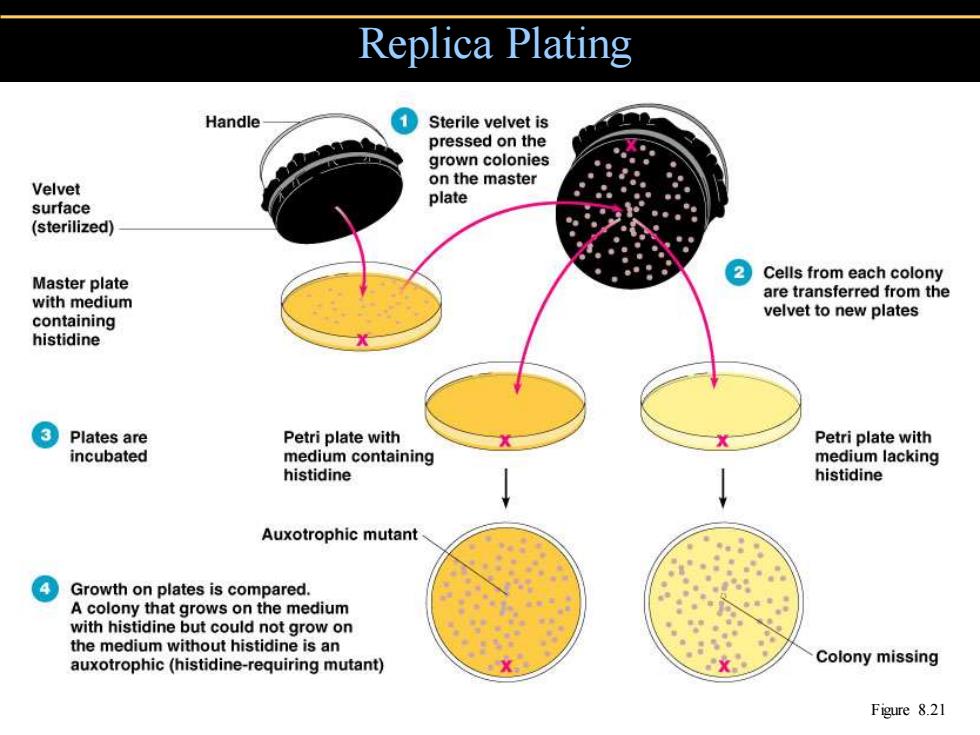
Replica Plating Handle 1Sterile velvet is pressed on the grown colonies on the master Velvet plate surface (sterilized) Master plate Cells from each colony are transferred from the with medium velvet to new plates containing histidine 3 Plates are Petri plate with Petri plate with incubated medium containing medium lacking histidine histidine Auxotrophic mutant Growth on plates is compared. A colony that grows on the medium with histidine but could not grow on the medium without histidine is an auxotrophic(histidine-requiring mutant) Colony missing Figure 8.21
Replica Plating Figure 8.21